Unique European Honeymoon Vacation Ideas

Searching for the best European honeymoon vacation ideas? Well, you are in the right place! Europe is filled with enchanting destinations that make it perfect for a honeymoon, offering everything from historic cities and charming villages to breathtaking coastlines and mountain escapes.
Having explored some of the continent’s most romantic spots during my eight week road trip with Chris, I’ve found that the best honeymoons in Europe (and in the UK) combine culture, beauty, and unforgettable experiences. Europe has no shortage of unique honeymoon ideas. Here are the ones I recommend, and I hope you'll love them too.
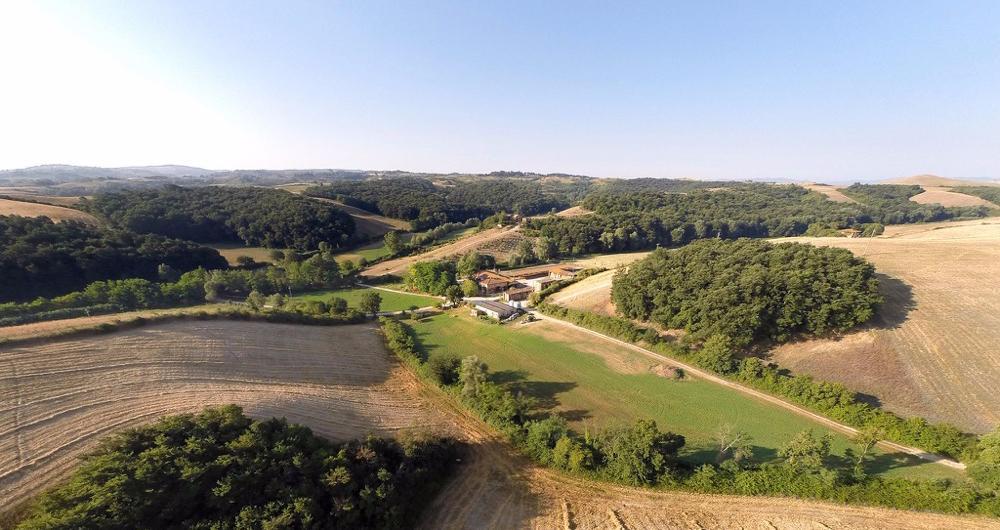
1. Barbialla Nuova, Italy
This hideaway is one of my top hidden gems in Europe and what I love about it most is that very few travelers even know about! In fact, I spent a full year in Florence before discovering Barbialla Nuova, a spectacular organic farm estate tucked away in the rolling hills of Tuscany, not far from Florence and San Gimignano.
From Florence, we drove about 40 miles southwest (just over an hour) into the hills of Tuscany and stayed at 3-star Barbialla Nuova for a week.
I loved how the property combined rustic Italian charm with an authentic, eco-friendly vibe—it wasn’t flashy, but that’s what made it so cool. The restored farmhouse we stayed in had this unusual, understated elegance, where stone walls, wooden beams, and simple details created an atmosphere that was both romantic and joyful. To me, this was one of the best places for couples who crave peace, nature, and a bit of magic away from the crowds.
We woke up to the most amazing sunrise views over vineyards and olive groves, and I honestly thought it was like stepping into a dream. Walking the trails through the forest, picking wild herbs, and even spotting wildlife gave the getaway such an exciting and unusual twist compared to the typical honeymoon resort.
I especially loved that we could take cooking classes, where I learned to make fresh pasta, and taste truffles right from the land—it felt vibrant and deeply connected to Tuscan traditions.
I love that you can visit so many cool sights nearby, including Tempio Di Minerva Medica Montefoscoli, Gambassi Terme, Livorno and Florence.
- Map & Directions
- Check prices at the 3-star Barbialla Nuova
What I loved best:
I think that this is one of the best honeymoons in Europe. Why? What made this place unforgettable for me was the combination of affordability and intimacy. It wasn’t about luxury in the traditional sense, but about creating the most meaningful memories together in an exceptional setting. For me, it was the absolute best choice for a honeymoon that felt personal, unique, and full of authentic Italian magic.
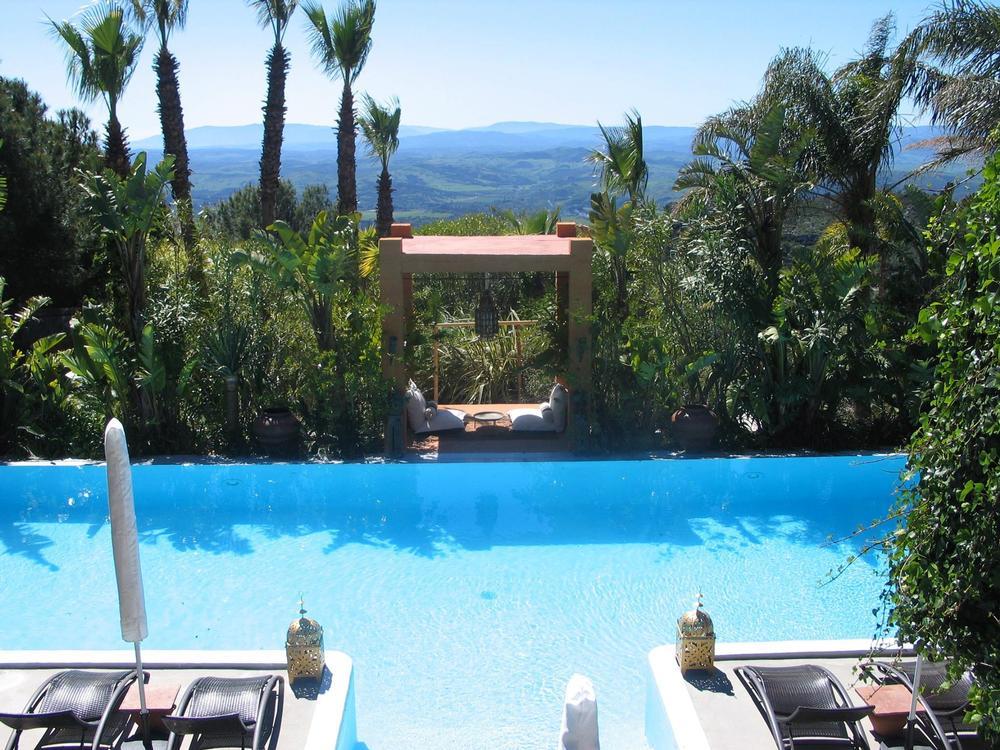
2. DDG Retreat, Costa del Sol, Spain
Hidden away from the busy beaches yet still close enough to explore Marbella or the charming whitewashed village of Casares, this place felt like a secret paradise that only a few travelers stumble upon! When I first arrived at DDG Retreat in Casares, tucked into the hills of Spain’s Costa del Sol, I instantly knew this was one of the most unique and romantic honeymoon spots I had ever seen.
From Málaga, we drove 65 miles southwest (about 1 hour 15 minutes) into the whitewashed village of Casares, perched in the Sierra Bermeja mountains (population around 6,000) where we stayed at DDG Retreat for four nights.
What I loved most was the atmosphere. This boutique retreat combines eco-luxury with a dreamy, intimate vibe. Our villa for a week, surrounded by a lush hillside, felt private, stylish, and absolutely perfect for a romantic getaway. My favorite part was the infinity pool that looked out over the Mediterranean coastline, with views stretching all the way to Gibraltar and even Morocco on clear days. Honestly, it was spectacular.
I thought the unusual design of our villa was so exciting. Some villas had outdoor stone baths, others had plunge pools, and all came with chic, modern touches that made them feel vibrant and cozy at the same time. It was the best mix of comfort and exotic flair. We spent mornings doing yoga in the open air, afternoons sipping wine on the terrace, and evenings under the stars in complete tranquility. It truly felt like a dream.
- Map & Directions
- Check prices at DDG Retreat
What I loved best:
I think this is the absolute best hidden gem in southern Spain for a honeymoon or a romantic getaway. Why? It’s intimate, eco-conscious, and full of magic—an underrated escape that’s all about love, relaxation, and creating joyful memories in one of the most beautiful corners of Europe.
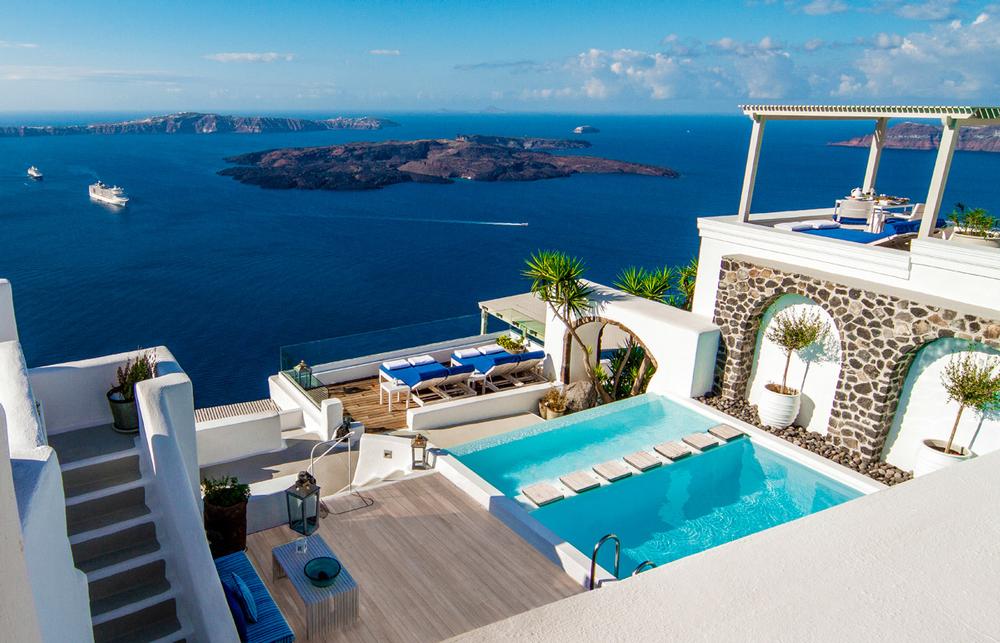
3. Iconic Santorini in Greece
I feel for this place as soon as we arrived! The setting here was beyond spectacular, with panoramic views of the caldera that felt like pure magic. We had seen photos before, but being there in person was the absolute best experience—it felt dreamy and unforgettable. So...when we arrived at Iconic Santorini, perched on the cliffs of Imerovigli, we knew right away this was going to be one of our favorite European honeymoon memories.
From Athens, we flew 140 miles southeast (about 50 minutes) to Santorini, a volcanic island of roughly 15,000 residents. History runs deep here: I wandered the ruins of Akrotiri, a Bronze Age city buried by the eruption of Thera around 1600 BCE, then visited the Archaeological Museum of Thera in Fira.
We loved how the retreat combined authentic cave-style architecture with sleek, modern touches. Our suite for a week had whitewashed walls, soft lighting, and a private terrace where we could sip wine and watch the most amazing sunsets together. The plunge pool overlooking the Aegean Sea was our favorite feature—it was so cool to float while gazing at the vibrant colors of the sky.
Every morning, we enjoyed a joyful breakfast on our terrace, filled with fresh fruit, local pastries, and Greek yogurt. It felt both indulgent and intimate. We also thought it was exciting that the hotel was so close to the village of Oia and the capital, Fira—yet tucked away enough to feel like a hidden gem where we could escape the crowds. Exploring little winding paths together, then retreating to our quiet oasis, gave us the best of both worlds.
- Map & Directions
- Check prices at 5-star Iconic Santorini
What I loved best:
This place is an exceptional experience. You can feel the romance, the history, and the magic of Greece in every moment. It's a great choice for a honeymoon filled with love, relaxation, and unforgettable beauty.
A downside? This is a luxury property, and prices reflect that — especially from May through September.
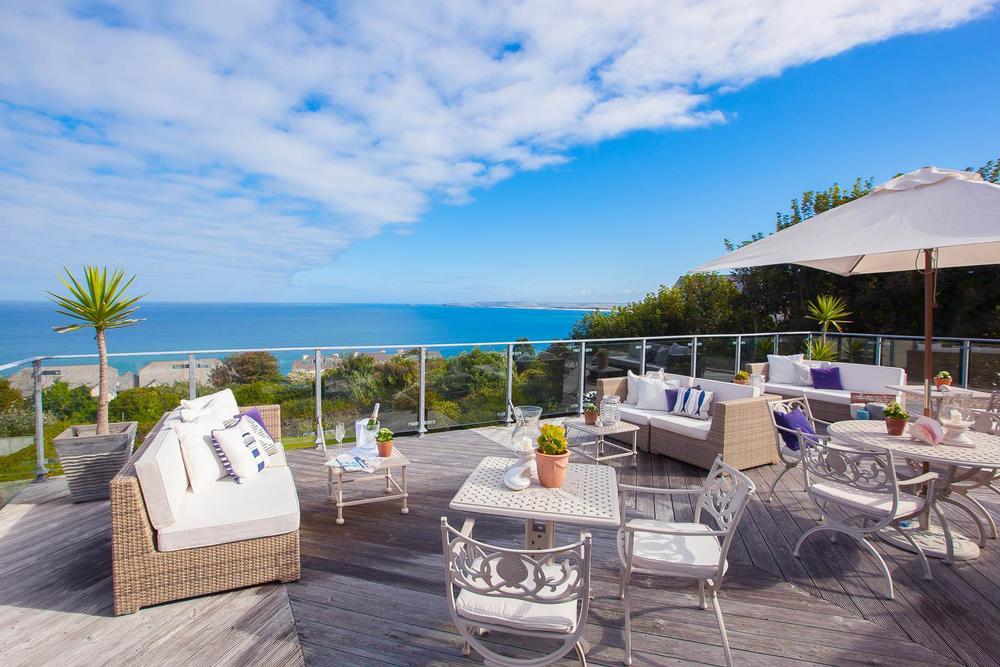
4. Boskerris Hotel in Cornwall, England
Nestled above the turquoise waters near St Ives, this boutique property had such a joyful, romantic vibe that instantly made it one of our favorite seaside getaways. We loved that it felt both stylish and relaxed—the perfect balance for a honeymoon or even a dreamy weekend escape.
A 2-hour drive west from Exeter (about 90 miles) landed me in Cornwall’s wilder corners, where coastline dominates the map. The South West Coast Path, a 630-mile national trail, threads along cliffs above turquoise coves and golden beaches. When we stayed at the Boskerris Hotel in Cornwall, we felt like we had discovered one of the most underrated gems in England!
We thought the design was amazing: a mix of modern coastal chic with soft pastels, warm wood accents, and big windows that showcased the spectacular ocean views.
Our room for a relaxing week came with a balcony where we sipped wine at sunset, watching the vibrant colors dance across the horizon—it was truly magical. The bed was so cozy, and waking up to the sound of waves made every morning feel special.
- Map & Directions
- Check prices at 4-star Boskerris Hotel
What I loved best:
What we really enjoyed was the intimate, welcoming atmosphere. The staff treated us like old friends, and the breakfasts were a highlight—fresh pastries, Cornish yogurt, and local produce that made each morning feel indulgent. We also thought it was cool that we could walk down to Carbis Bay or take a short trip into St Ives, one of Cornwall’s most exciting towns filled with art galleries, hidden cafés, and golden beaches.

5. Hotel Gotthard in Lech, Austria
I thought that this Lech, Austria gem was one of the best honeymoons in Europe. Why? As soon as we arrived, we instantly felt wrapped in warmth and alpine charm.
From Innsbruck, we drove 75 miles west (about 2 hours through mountain passes) to Lech, a postcard-perfect alpine village of around 1,600 residents. Though best known today as a luxury ski resort, Lech’s roots run deep, it was founded in the 13th century by Walser settlers, and its wooden chalets still carry that heritage.
Nestled in the heart of this famous ski village, the hotel struck us as both vibrant and cozy, making it one of our favorite places for a romantic winter or summer getaway. We thought it was the absolute best mix of luxury and homeliness, a hidden gem in the Austrian Alps that made every moment feel special.
We loved our spacious room for a 8 days, which came with soft wooden accents, a dreamy bed, and a balcony overlooking snow-dusted peaks. Waking up to that spectacular mountain view was pure magic. In the evenings, we found ourselves curled up in the lounge, sipping wine by the fire after a joyful day outdoors—it was the perfect way to end each night.
What made our stay so exciting was the hotel’s incredible amenities. We relaxed in the spa with its sauna and pool, and we thought the family-run atmosphere made everything feel exceptionally personal. The owners even bake fresh bread daily, and we agreed it was one of the coolest touches—it added such a unique, heartwarming detail to our mornings.
- Map & Directions
- Check prices at Hotel Gotthard
What I loved best:
We also loved how easy it was to reach the ski lifts or take scenic hikes right from the doorstep. Whether we were carving down the slopes or wandering through alpine meadows, the location felt ideal. For us, Hotel Gotthard was the absolute best choice in Lech—romantic, welcoming, and unforgettable, a true alpine dream we can’t wait to relive.
A downside? During peak ski season, it's difficult to get room reservations and booking spa treatments was challenging.
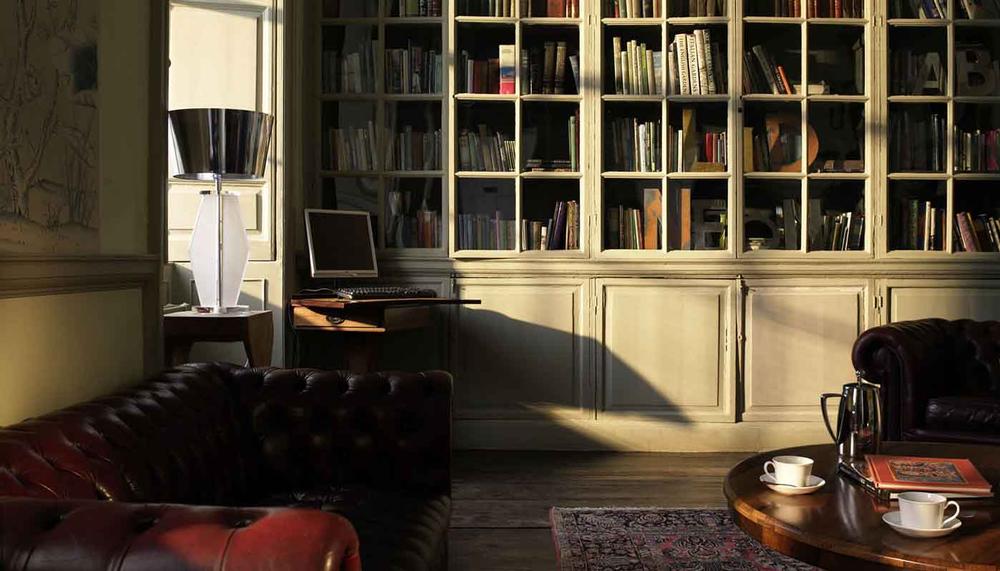
6. Bellinter House in County Meath, Ireland
When we stayed here, we felt like we had discovered one of Ireland’s coolest and most unusual country escapes. Just 30 minutes from Dublin, this Georgian manor was the perfect blend of historic elegance and modern, playful charm, a hidden gem that became one of our favorite romantic getaways.
From Dublin, we drove 30 miles northwest (about 45 minutes) into County Meath, often called Ireland’s “Royal County” thanks to its historic seat at the Hill of Tara. With a population of about 220,000 spread across towns and farmland, it’s rich in heritage.
I stood in awe inside Newgrange, a Stone Age passage tomb more than 5,000 years old, older than Stonehenge or the Pyramids, and visited Trim Castle, the largest Norman castle in Ireland.
We loved wandering through the spectacular estate grounds, with their ancient trees and rolling green lawns that seemed to stretch forever. The house itself felt vibrant and full of character, with quirky design touches, contemporary art, and a warm atmosphere that made it both stylish and inviting. For us, it was the absolute best balance of tradition and modern comfort.
Our room for five days was dreamy, with high ceilings, big windows, and a cozy bed that made mornings feel indulgent. We especially enjoyed the spa-style bathroom, which felt like such a cool, modern contrast to the historic setting. Every corner of the house felt Instagram-worthy, but what really won us over was the sense of joy and relaxation that came with staying there.
- Map & Directions
- Check prices at Bellinter House
What I loved best:
Dinners at the Eden Restaurant were a highlight. We thought the creative dishes made from fresh, local ingredients were some of the most amazing meals of our trip. Afterward, we curled up by the fire with a glass of wine, feeling like we had all the time in the world.
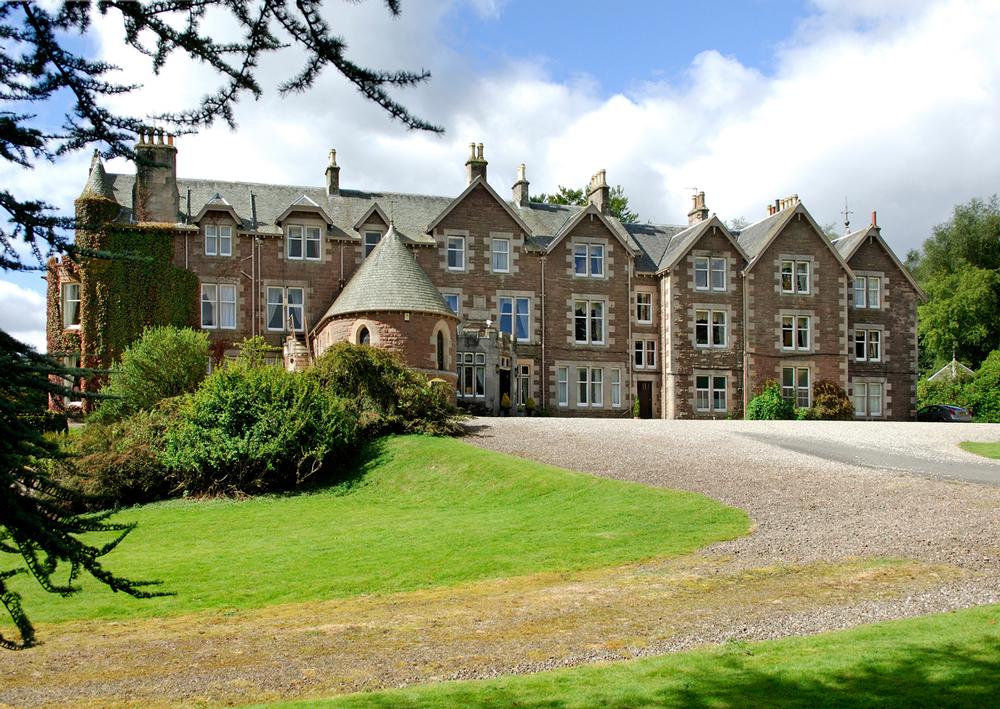
7. The Cromlix in Dunblane, Scotland
When we stayed here, I honestly felt like we had stepped straight into a romantic Scottish dream.
From Edinburgh, I drove 40 miles northwest (about 1 hour on the M9) to Dunblane, a small cathedral town of around 9,000 residents. Its heart is Dunblane Cathedral, a 12th-century masterpiece where medieval stonework and Victorian restoration blend in a way that completely won me over.
Owned by tennis legend Andy Murray, this elegant countryside mansion was easily one of the most unique and exciting places we’ve ever stayed. Just an hour from both Edinburgh and Glasgow, its a a hidden gem that felt worlds away from the bustle of the cities.
We loved how the hotel blended historic grandeur with a modern, vibrant touch. High ceilings, antique furniture, and roaring fireplaces gave it an old-world charm, while bold colors and stylish details made the atmosphere feel fresh and joyful. For us, the absolute best part was wandering the spectacular grounds, filled with ancient trees, gardens, and even a little chapel that added so much magic to the setting.
Our room for a week was amazing, with a dreamy four-poster bed, a luxurious marble bathroom, and huge windows looking out over the rolling Scottish countryside. We thought it was the coolest mix of history and modern comfort—it felt indulgent yet welcoming at the same time. Every detail made it clear this was designed as a true romantic retreat.
- Map & Directions
- Check prices at 5-star The Cromlix
What I loved best:
My personal highlight was the restaurant, overseen by chef Darin Campbell, where we enjoyed some of the most exceptional Scottish dishes, crafted with seasonal and local ingredients. Pairing that with a glass of wine by the fire afterward was pure bliss.
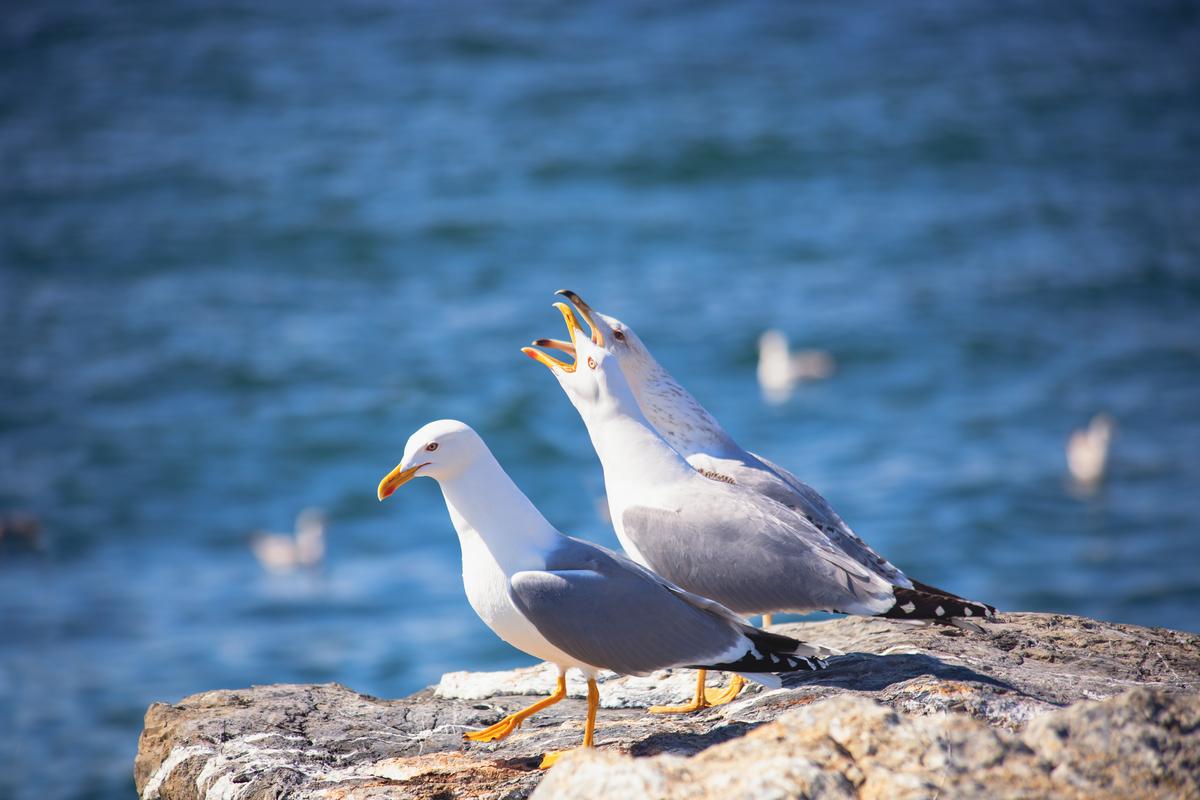
8. Mandarin & Mango Boutique Hotels, Turkey
Perched on dramatic cliffs above the sparkling Mediterranean, this getaway has such incredible views that it instantly became on of my top honeymoon places to visit!
From Dalaman Airport, I drove 35 miles (about 1 hour) to Fethiye, where the twin Mandarin & Mango Boutique Hotels sit tucked in the hills above the Turquoise Coast.
The town itself, with a population of about 170,000, is steeped in history.
I explored the incredible Lycian rock tombs carved into cliffs in the 4th century BCE, then strolled through Fethiye’s old bazaar, alive with spice stalls and textiles.
When we discovered Mandarin & Mango Boutique Hotels in Faralya, along Turkey’s stunning Turquoise Coast near Fethiye, we knew right away this was going to be one of our favorite romantic escapes.
We loved how each villa and suite had its own unique character, with vibrant touches of Turkish design blended with sleek, modern comfort.
Our room for two weeks had a dreamy four-poster bed, stone walls, and a private terrace where we watched the most spectacular sunsets—it honestly felt like magic. The infinity pool overlooking the sea was another highlight, and we thought it was the absolute best spot to relax together in total peace.
What excited us most was the hotel’s unusual location—so close to the famous Butterfly Valley and the Lycian Way trail, yet completely tucked away from the crowds. We spent our days hiking, swimming, and exploring, then returned to this tranquil oasis for joyful evenings under the stars.
- Map & Directions
- Check prices at Mandarin & Mango Boutique
What I loved best:
Dinners were exceptional, with fresh local produce, seafood, and Mediterranean flavors served in a romantic open-air setting. We agreed it was one of the most amazing dining experiences we’d had in Turkey.
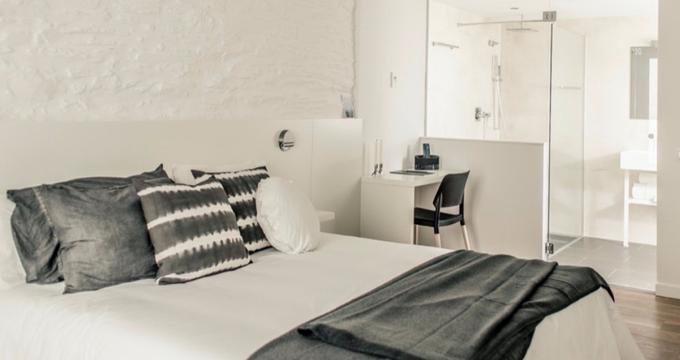
9. Tramuntana Hotel, Mallorca
Nestled in the charming village of Sóller, surrounded by the spectacular Tramuntana mountains, I thought that this place was the absolute best setting for a Mediterranean honeymoon! We loved how it felt peaceful and intimate, yet still just a short stroll from vibrant cafés and the cool little shops of the town square.
From Palma de Mallorca, I drove 20 miles northwest (about 40 minutes) into the Serra de Tramuntana, a UNESCO World Heritage mountain range. When we stayed at Tamuntana Hotel in Mallorca, we felt like we had uncovered one of the island’s most underrated gems.
Our room for two weeks was dreamy, with soft neutral tones, wooden beams, and big windows that filled the entire space with light. We thought the design was both stylish and cozy, blending rustic Mallorcan charm with modern touches. Waking up to mountain views and the scent of orange blossoms drifting in from the valley was pure magic for us. It instantly became one of our favorite mornings of the trip.
We spent afternoons lounging by the pool, sipping local wine, and feeling like we had discovered the coolest hidden hideaway on the island. The vibe was joyful and relaxed, a perfect contrast to the busy beaches elsewhere in Mallorca. Exploring nearby hiking trails and then returning to such a tranquil haven made every day feel exciting and balanced.
- Map & Directions
- Check prices at Tramuntana Hotel
What I loved best:
Breakfasts at the hotel were exceptional—fresh fruit, homemade pastries, and local specialties that made each morning feel indulgent.
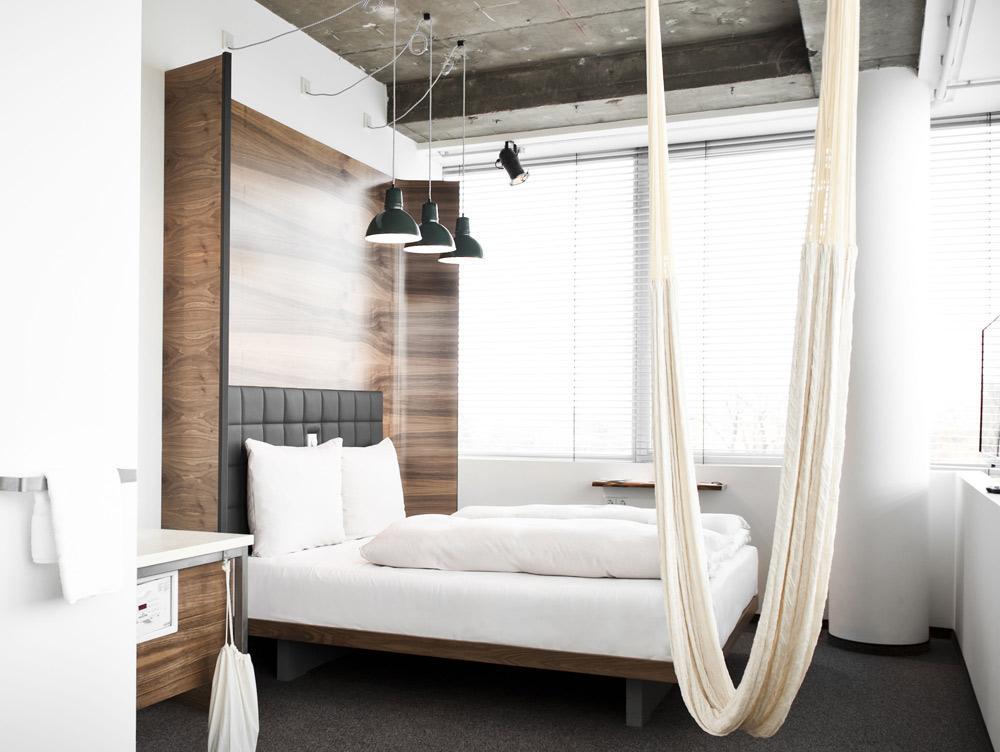
10. Hotel Daniel
Just steps from Belvedere Palace and close to the vibrant city center, this was the absolute best spot for a stylish yet affordable city honeymoon in Europe! We loved how it mixed a modern, industrial vibe with playful design touches that made every corner feel exciting and unique.
We took the ÖBB Railjet from Munich to Vienna (about 4 hours, €40–€70 one way) which was much more relaxing than driving. Vienna is made for car-free travel: trams, U-Bahn, and walking paths connect everything. When we stayed at Hotel Daniel in Vienna, we felt like we had discovered one of the coolest and most unusual urban boutique hotels in Europe!
Our room for ten fun days was minimalist but full of character—sleek lines, warm wood accents, and floor-to-ceiling windows that flooded the space with light. We thought the hammock hanging right in the room was one of the most brilliant ideas, adding a joyful, quirky touch that made our stay even more fun. Waking up to views of Vienna’s skyline felt like magic, and it quickly became one of our favorite hotel experiences in the city.
We also loved the vibrant community spaces. The bakery was exceptional, serving fresh bread and pastries every morning that we couldn’t resist. In the evenings, we enjoyed cocktails in the chic lounge before heading out to explore Vienna’s spectacular culture and history—it felt so easy and exciting to be based right there. The on-site bike and Vespa rentals were another cool detail that made getting around the city fun and effortless.
I love how much there is to do nearby. In Vienna, you can explore imperial history by visiting Schönbrunn Palace, the Hofburg Palace, and Belvedere Palace. Art lovers should see the Kunsthistorisches Museum and the Albertina Museum, while a visit to the Vienna State Opera or a classical concert is a must on your honeymoon.
- Map & Directions
- Check prices at Hotel Daniel
What I loved best:
It’s an underrated gem in Vienna, stylish, affordable, and unforgettable. We left with joyful memories and a strong feeling that we’d found one of our favorite spots in the city.
You can easily combine a stay here with a few days at Hotel Gotthard in Lech, a scenic 6 hour drive away.
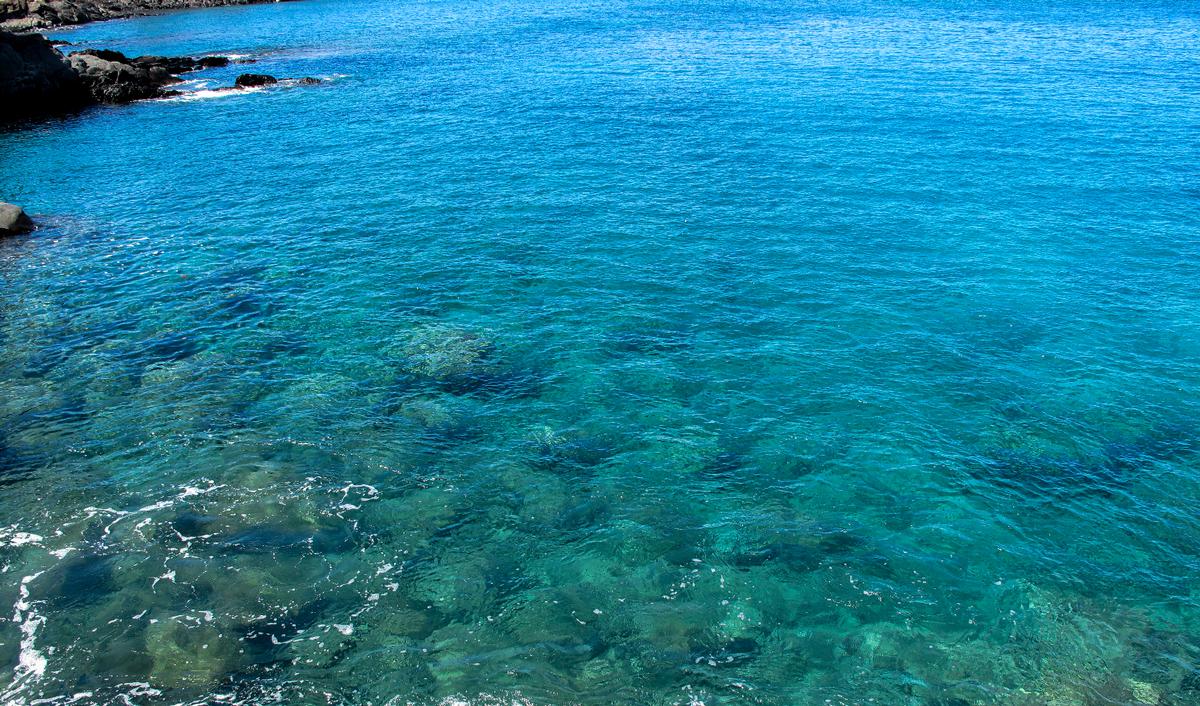
11. Grand Hotel Brioni Pula
Perched right on the Adriatic coast, surrounded by pine forests and turquoise waters, this place was the absolute best setting for a romantic honeymoon!
From Rijeka, we drove 65 miles south (about 1.5 hours along the Istrian coast) to Pula, a port city of around 57,000.
The star of the show is the Pula Arena, a remarkably intact Roman amphitheater built in the 1st century CE that once held 20,000 spectators.
When we stayed at the Grand Hotel Brioni in Pula, Croatia, we felt like we had discovered one of the most spectacular seaside escapes in Europe. Our room for a care-free week was dreamy, with sleek design, floor-to-ceiling windows, and a balcony that opened onto breathtaking sea views. We thought it was amazing to wake up each morning to the sound of the waves and those vibrant shades of blue stretching out to the horizon. For us, it felt like pure magic, the kind of view you never forget.
We also adored the infinity pool overlooking the coast—it was the coolest spot to unwind together with a glass of wine in hand. The spa was another highlight, offering exceptional treatments that left us feeling completely refreshed.
- Map & Directions
- Check prices at 4-star Grand Hotel Brioni Pula
What I loved best:
What made it even more exciting was its location—just minutes from Pula’s Roman amphitheater and the lively old town. We loved being able to explore history during the day and return to such a spectacular retreat at night.
For me, Grand Hotel Brioni Pula is one of the best European honeymoon vacation ideas. It's romantic, luxurious, and a favorite escape I can’t wait to return to for the scenery alone!
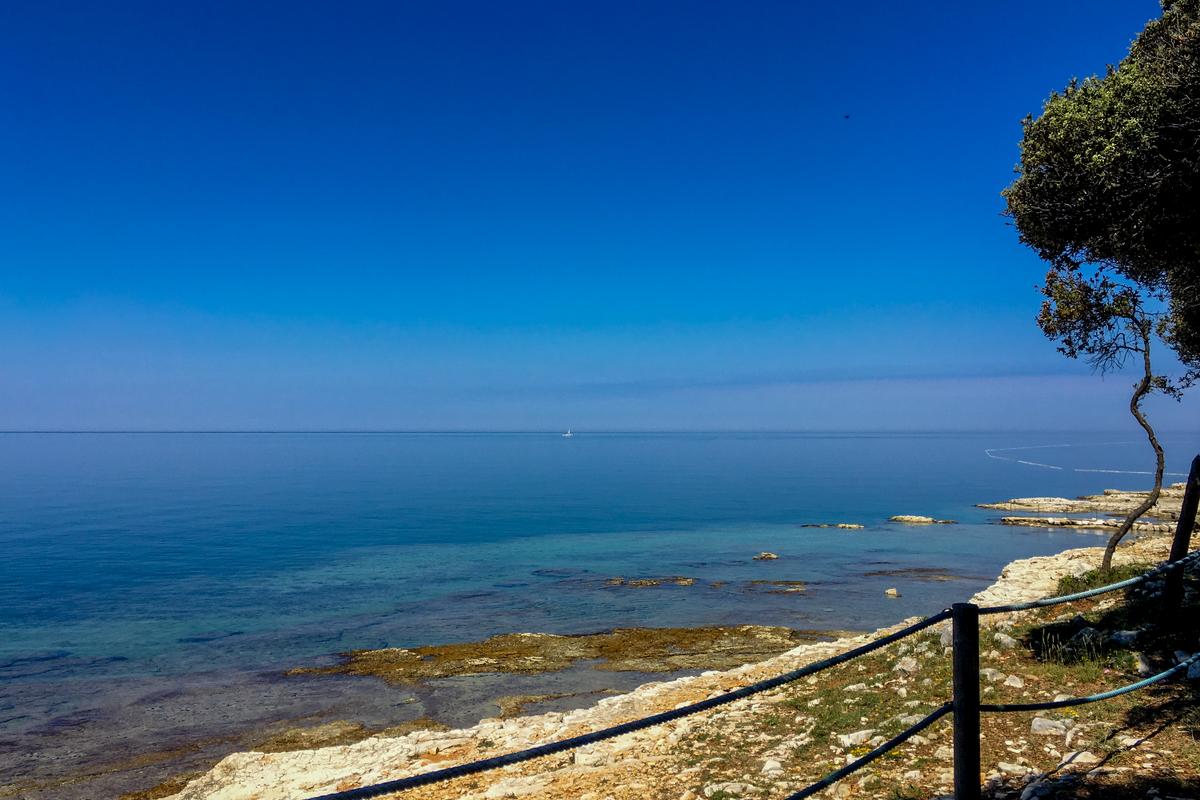
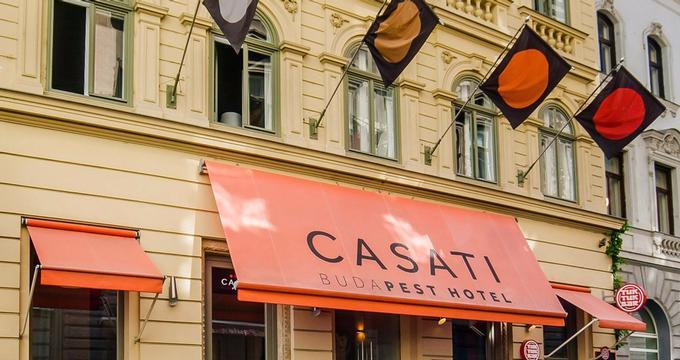
12. Casati Budapest Hotel
Tucked away just far enough from Budapest’s bustling main streets to feel peaceful (yet close enough to wander effortlessly into the city’s energy!) this place felt like one of those rare urban honeymoon hideaways that instantly made me grateful we found it.
When I first stepped inside this adults-only boutique hotel in the historic Terézváros district, I immediately sensed that this was one of the most stylish, intimate places to stay in the Hungarian capital.
From Budapest Airport, it was a quick 40 minute drive into the heart of the city, where Casati sits inside a beautifully restored 18th-century townhouse. With only 25 rooms, the hotel manages to feel exclusive while still warmly welcoming—almost like being let in on a local secret.
What struck me most was the atmosphere: a blend of contemporary art, old-world elegance, and a serene, almost gallery-like calm. Each floor has its own artistic theme—Classic, Cool, Natural, and Heaven—giving every room its own personality.
Our romantic room for five easy days was bright, airy, and effortlessly chic, with unique design touches too.
One of my favorite parts was the central courtyard. Surrounded by sleek architecture and glowing lanterns at night, it became our little sanctuary after busy days exploring the city. Whether we were sipping a glass of Tokaji wine, unwinding in the sauna, or planning our next adventure in the lounge, everything felt calm and curated.
- Map & Directions
- Check prices at adults-only Casati Budapest Hotel
What I loved best:
I think that this place is a fantastic idea for a city honeymoon in historic Europe!
My personal highlight was how mornings began with a delicious slow breakfast which gave us all the fuel we needed to enjoy the city!
Booking Checklist
1. Book Your Flight - I use Expedia because I like their mobile app with my itinerary. They've helped me re-book flights on many occasions. Once you reach their Gold tier, support is especially good.
2. Book Your Hotel - I use Booking.com or Expedia, depending on my destination.
3. Book Your Rental Car - I use Expedia.
4. Book your tours on Viator or Get Your Guide.
5. If you are planning to visit more than three national parks in the next 12 months, buy the America the Beautiful Pass.
